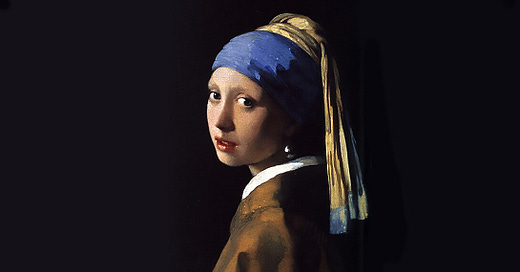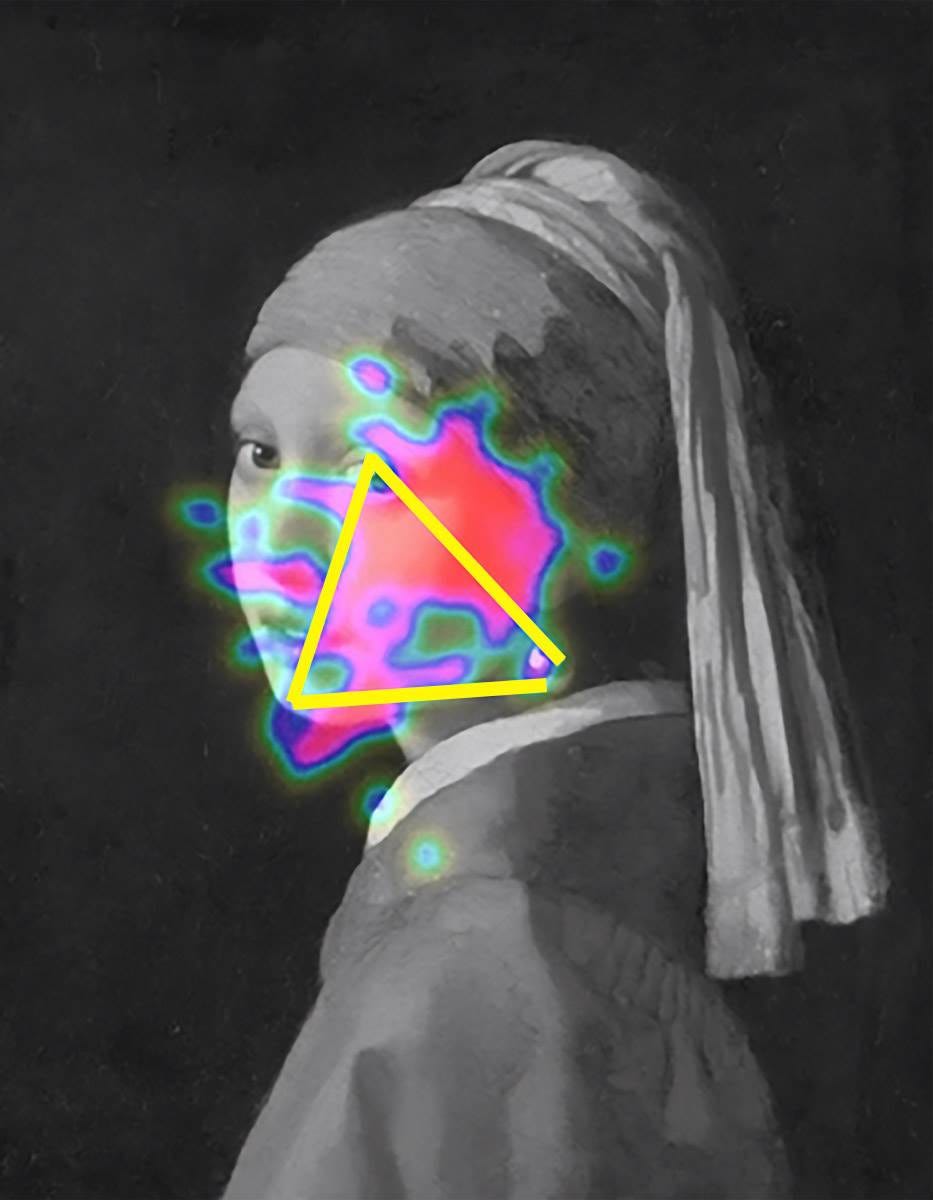I grew up admiring this girl. I was head-over-heels. I could not ignore her gaze. She was always on display in my childhood home — gracing the cover of my mom’s voluminous coffee-table art history book.
The painting is Johannes Vermeer’s “Girl with a Pearl Earring,” from the Dutch Golden Age. He painted her sometime around 1665. It’s also the title of a 2003 movie, which wasn’t bad.
There’s a scientific reason this girl is so captivating.
For the first time, neuroscientists have measured brain activity while people gaze at the “Girl,” and the results are striking. The researchers discovered that the painting triggers a unique neurological effect they’ve dubbed the “Sustained Attentional Loop.”1
There are three focal points in Vermeer’s painting that irresistibly pin your eyes. They circulate from her gaze, to her earring, to her mouth, and then back for another run. The viewer is captivated. The Mona Lisa has the same effect.
Neuroscientists attribute this effect to the precuneus. I was only six and, while maybe a little precocious, had yet to discover my precuneus. And I certainly would not have told my mom if I’d known it had been stimulated.2
Interestingly, the viewer’s emotional response is typically 10 times stronger when looking at the actual painting rather than a reproduction.
We live in a time when we are increasingly confronted with copies and interpretations of reality. You might think that real, genuine art or objects therefore become less important, but the opposite is true: real is actually becoming more important. An encounter with a real work of art is much more intense than with a copy. How wonderful that this effect has now been scientifically demonstrated and can be seen in brain activity. The results of this new research are important and relevant for the entire museum sector.
Vera Carasso, director of the Netherlands Museum Association
The Night Watch
I recall my first encounter with Rembrandt’s “The Night Watch,” which is prominently displayed at the Rijksmuseum in Amsterdam, Netherlands.
While it was common for civic militias (social clubs) to be painted, Rembrandt revolutionized the genre by depicting the group in action rather than in static poses.
In my opinion, Rembrandt was unwittingly influenced by an archetype — one like Merlin from Arthurian legend, who serves as a wise prophet guiding King Arthur with his foresight. Better yet, "The Visionary Inspirer." This archetype embodies the foresight and wisdom of a prophet while possessing the creative spark and inspirational qualities of a muse.
Rembrandt's manipulation of light and shadow in "The Night Watch" was unprecedented. The art term is “chiaroscuro.” He used dramatic contrasts of light and dark to highlight important figures and create a compelling visual narrative, particularly Captain Frans Banning Cocq and his lieutenant Willem van Ruytenburch. Other members of the group faded into the background, save one.
The girl is a mysterious and significant element of the painting. She is often referred to as the "golden girl" due to her striking appearance. This girl is not meant to represent a real person but rather serves as a personification of the entire company. Her presence adds an allegorical dimension to the painting, elevating it beyond a prescriptive group portrait.
To me, she is as captivating as the girl with the pearl earring. And I believe her inclusion in the portrait to be the centerpiece of its mysterious prophetic nature.
I mention the “prophetic nature” of this famous art because I further believe it is applicable to our times, a quasi-subliminal suggestion I’ll leave to your precuneus and active imagination.
Happy New Year from the staff here at Rational Spirituality — namely me and my dog Oz.
The precuneus is a highly developed association cortex of the medial parietal cortex that controls voluntary attention shifts in spatially guided behavior. The precuneus is involved in one’s sense of self, self-reflection, and episodic memories.






